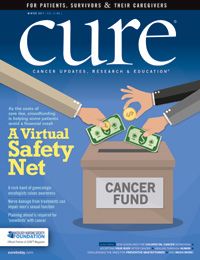When Less is More
Less invasive testing for colorectal cancers may lead to more people getting screened.
ONE OF THE MOST valuable and effective aspects of our health care system is our ability to screen people for a variety of cancers before the illnesses become apparent. A cancer might be tiny and silent, offering no signs that it’s present and growing, but some tests have proven effective in detecting early disease in large populations of Americans: for instance, mammograms for breast cancer, CT scans for lung cancer and colonoscopies for colorectal cancer. Finding these cancers early can make a world of difference when it comes to how much treatment is needed and for how long — as well as the likelihood of cure.
So, with a test approved for the detection of colorectal cancer in the population most likely to develop it — people over the age of 50 — why are one in every three of these individuals not up to date with their screenings? Frankly, in many cases, it’s because they don’t want to undergo colon cleansing, followed by an invasive test.
But now, there are other options. In this issue of CURE®, we explain that the U.S. Preventive Services Task Force has given a variety of tests its top rating as screening methods for colorectal cancer — recommended as equivalent to colonoscopy for individuals of average risk. That means you can choose to be screened via less invasive methods, such as stool samples you collect at home and mail to a lab for testing.
We’re hopeful that this new array of options will encourage more people to undergo screening, and to potentially avoid facing an advanced colorectal cancer. Read on to learn about your choices.
Also in the pages ahead, we focus on men’s sexuality after cancer, which can be a difficult road following certain treatments, particularly those for prostate cancer. Our article discusses methods for working toward the best possible sexual health outcomes.
In other important topics, we delve into the issues faced by “snowbirds” who need to arrange for cancer care when they travel to warm climates during the winter months. We look at the option of crowdfunding for those who need help with their medical or daily living costs. And we consider the dilemma of cancer-related fatigue.
We hope that some of the information in this diverse set of articles will be particularly helpful to you — shedding light on what’s happening in your body, spelling out your options for screening or care, or offering ways to improve your quality of life.
As always, thank you for reading.
MIKE HENNESSY, SR.
Chairman and CEO
